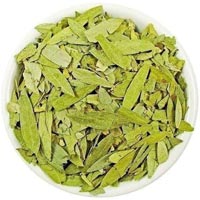Farhadi K, Schwebel DC, Saeb M, Choubsez M, Mohammadi R, Ahmadi A.
Complement Ther M. 2009 jan;17(1):9-15. doi: 10.1016/j.ctim.2008.05.003. Epub 2008 jun 24.
Author information
1Department of Anesthesiology, Critical Care and Pain Management, Pain research center, Kermanshah University of Medical Sciences, Iran.
Abstract
OBJECTIVES:
To determine the efficacy of wet-cupping for treating persistent nonspecific low back pain.
BACKGROUND:
Wet-cupping therapy is one of the oldest known medical techniques. It is still used in several contemporary
societies. Very minimal empirical study has been conducted on its efficacy.
DESIGN:
Randomized controlled trial with two parallel groups. Patients in the experimental group were offered the option of referral to the wet-cupping service; all accepted that option. The control group received usual care.
SETTING:
Medical clinic in Kermanshah, Iran.
PARTICIPANTS:
In total, 98 patients aged 17-68 years with nonspecific low back pain; 48 were randomly assigned to experimental group and 50 to the control group.
INTERVENTION:
Patients in the experimental group were prescribed a series of three staged wet-cupping treatments, placed at 3 days intervals (i.e., 0, 3, and 6 days). Patients in the control group received usual care from their general
practitioner.
MAIN OUTCOME MEASURES:
Three outcomes assessed at baseline and again 3 months following intervention: the McGill Present Pain Index, Oswestry Pain Disability Index, and the Medication Quantification Scale.
RESULTS:
Wet-cupping care was associated with clinically significant improvement at 3-month follow-up. The experimental group who received wet-cupping care had significantly lower levels of pain intensity ([95% confidence interval (CI) 1.72-2.60] mean difference=2.17, p<0.01), pain-related disability (95% CI=11.18-18.82, means difference=14.99, p<0.01), and medication use (95% CI=3.60-9.50, mean difference=6.55, p<0.01) than the control group. The differences in all three measures were maintained after controlling for age, gender, and duration of lower back pain in regression models (p<0.01).
CONCLUSIONS:
Traditional wet-cupping care delivered in a primary care setting was safe and acceptable to patients with nonspecific low back pain. Wet-cupping care was significantly more effective in reducing bodily pain than usual care at 3-month follow-up.


